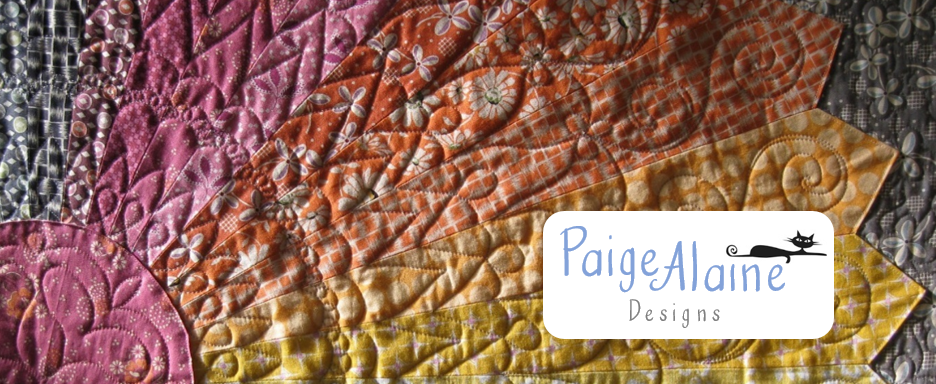Are you thinking about taking a quilt to a longarm quilter and not quite sure what you need to do to prepare your quilt before dropping it off or sending it out? I’ve pulled together some helpful tips to ensure a better end result with your quilt while helping to reduce the possibility of unnecessary extra work for your quilter and extra costs to you.
- Please piece carefully. Longarmers cannot quilt out bubbles and pleats that have been pieced.
- Make sure that all seams are stitched securely. When the quilt is loaded onto the rollers the fabric is kept taut. If the seams are not strong and accurate they will pull apart. (It’s a good idea to take into account the thread color you are piecing with verses using whatever is handy. I’ve seen purple thread used to piece white fabric and white thread to piece black fabric -it’s not pretty when seams pull apart!)
- Take the time to square your quilt top, batting and backing – I can’t stress this enough! Many times it is not obvious to the longarm quilter until the quilt is fully loaded on the machine rollers. In some cases, it will require extra work for the quilter to unload, square and reload and most likely they will charge you to do so.
- For flat borders, measure your quilt center in three places as shown in the diagram below…1) where the border will be sewn on 2) down the center and 3) the opposite side of the quilt then take the average -this will give you a consistent accurate measurement for the opposing borders. Pin borders on, stitch and press. When stitching your borders on, consider using a dual-feed/walking foot on your sewing machine to help pull both the quilt center and border fabric at the same time avoiding either from stretching more than the other.
- All seams on the quilt top and back must be pressed.
- Back seams should be 1/2″ and pressed open.
- Remove any selvages – they do not stretch and can cause blocks or backings to not lie flat.
- Trim all loose threads – you do not want to see dark thread tails lying behind lighter fabrics.
- Backing and batting must be at least 6-8” longer and 6-8″ wider than the quilt top. This allows the quilter to attach grips to the sides of the quilts to help distribute tension on the quilt evenly…if less, the grips will get in the way of the machine when close to the edge of the quilt. I also recommend the backing and batting be fairly close to the same size, if backing is much larger than the batting the tension grips can only grip the back fabric and because of their weight can cause the quilt sides to sag resulting in uneven tension.
- Before purchasing batting check with your quilter as they may have batting type restrictions. Some battings perform better than others on a long arm.
- To prevent uneven shrinkage, if you have washed your quilt top, you should wash your quilt back.
- If you have a heavily pieced border stay-stitch 1/8” in from the edge around the perimeter of the quilt to prevent seams from unraveling and/or stretching.
- Do not baste layers together. Top/batting/backing should be neatly folded separately and placed in a bag or pillow case to protect.
- Identify the top of your quilt with a safety pin if you have a preference.
Following these simple tips will help your longarm quilter be more successful in quilting your treasure and you being more pleased with the end result.



No comments:
Post a Comment